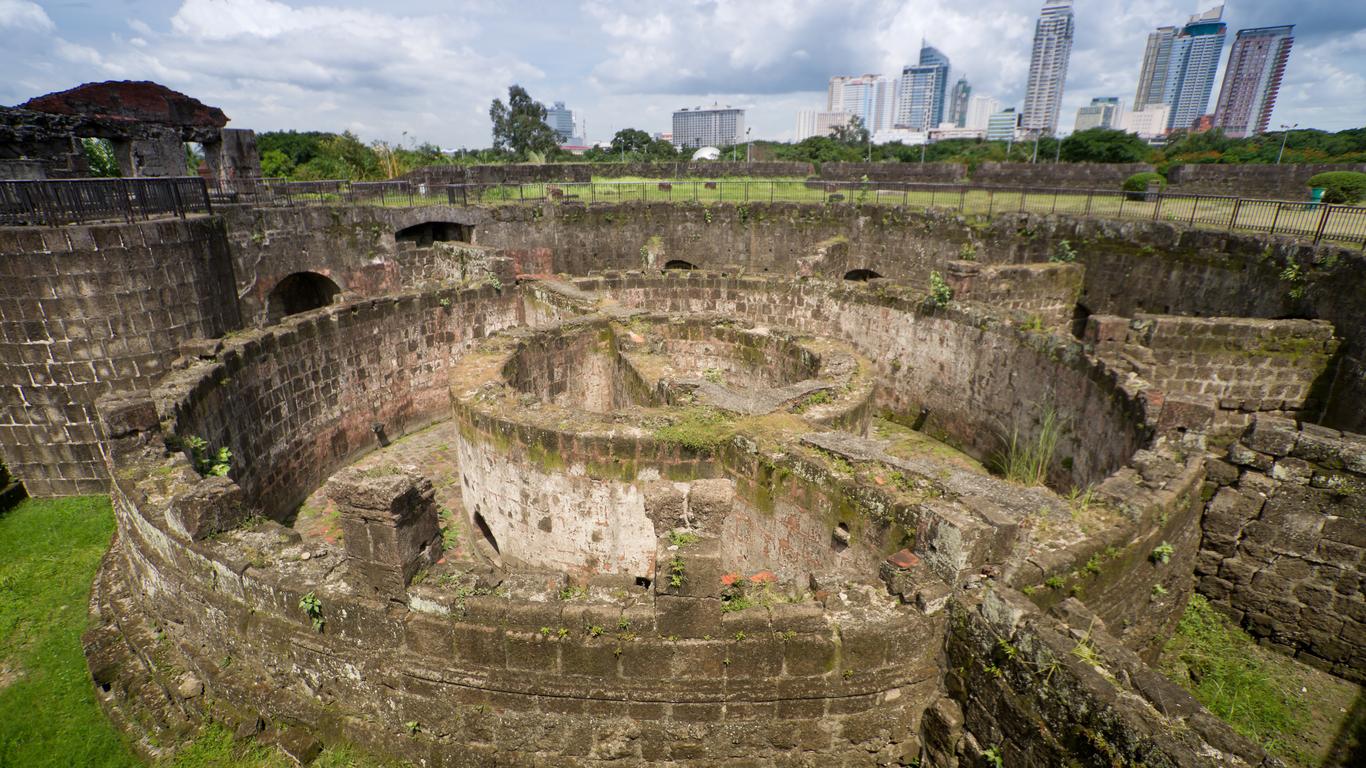Meaning “within the walls”, Intramuros is the old walled centre of Manila, the capital of the Philippines, its most ancient area and historic district and once home to the seat of government. Natives also call it the Walled City, as the old stone fortifications almost entirely encompass it, circling the district over 5 kilometres and first created as a defensive structure that remains today. Intramuros is a National Historical Monument and heavily protected by the Global Heritage Fund, which fears the site to be on the verge of irreparable damage due to its ruin over the years.
In addition to the walls, Intramuros defines itself by other physical features such as bulwarks and bastions, defensive fortresses all designed in different styles due to construction spanning over a wide range of time throughout different architectural eras. Another defining feature is the gates of Intramuros, which were once the only entrances into the city, equipped with drawbridges and now conserved as cultural landmarks decorated with old carvings. Today, visitors can still sense the old Spanish influences within the walls, as there has been limited commercialisation of the area and maintains the history of the district with Fort Santiago being the most tourist attracting location. The Colegio de San Juan de Letrán is one of the oldest sites of education in the Philippines and inspires a large student population,where the district hosts similarly old churches including Manila Cathedral and the UNESCO World Heritage Site, San Agustín Church.
Once in Manila, visitors can walk or get a taxi to Intramuros. The nearest train station is Central Terminal, located near the eastern walls, with links to other cities in the Philippines. There is a waterbus navigating the Pasig River which visitors can use to get closer to Intramuros, and once inside the district visitors can navigate by foot, especially with the walls to guide a sense of direction.
Tribes and ancient kingdoms established themselves in Manila due to its strategic location at the mouth of the Pasig River for trade and defensive purposes, and even before the arrival of Europeans armies fought over land. Spanish explorers arrived in 1564, and after many attacks, they constructed a wall and created Intramuros in the 16th century which workers maintained in the following years although it faced much damage by earthquakes.





